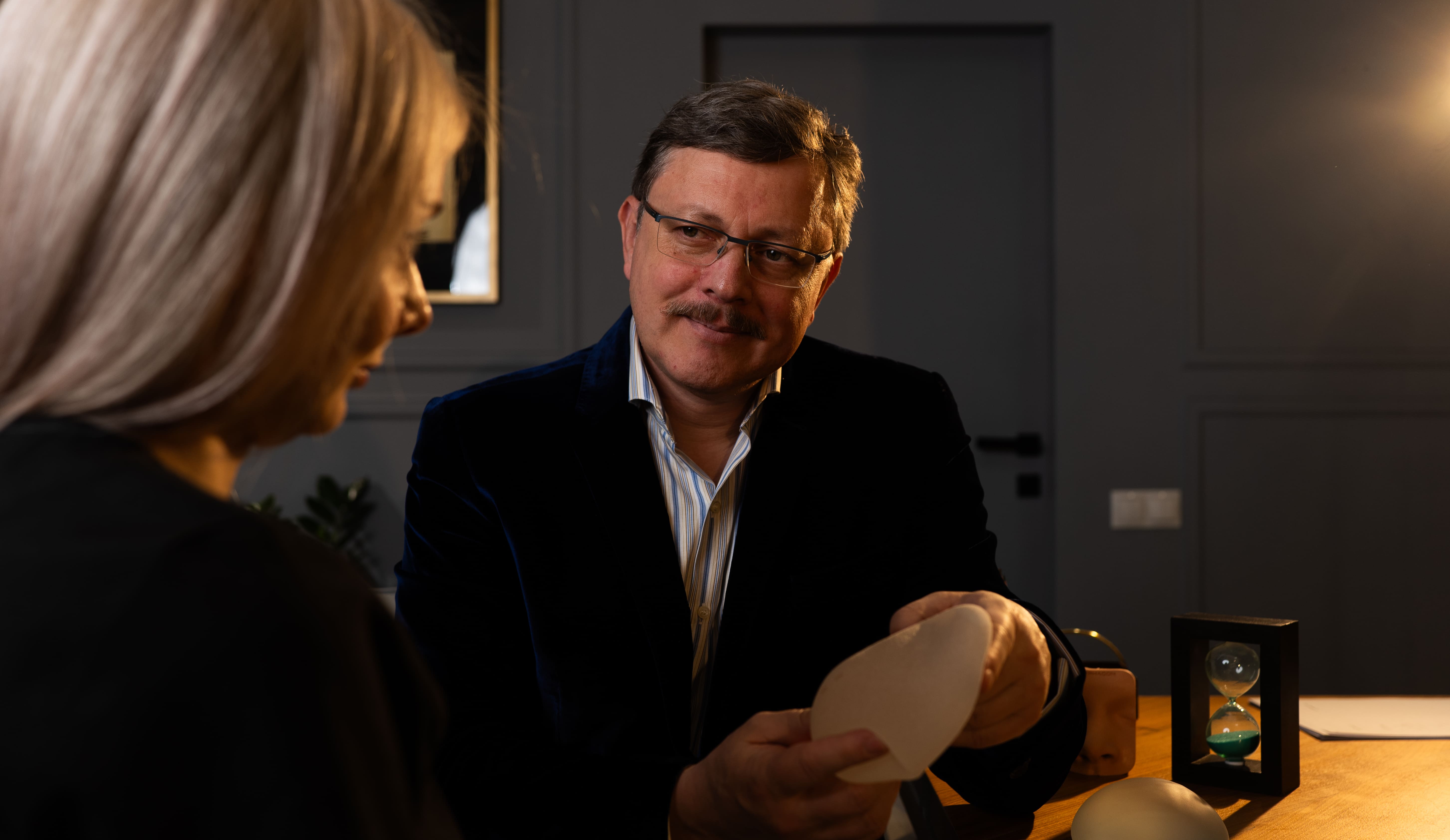MIA Breast Harmonization — a marketing trend or a harmonious alternative to classical mammoplasty?
In recent years, a new term has appeared in aesthetic surgery — MIA (Minimally Invasive Augmentation) or MIA Breast Harmonization. The phrase sounds appealing: “minimally invasive,” “harmonization,” “quick recovery.” Yet behind every marketing promise, there should be clinical logic. In this article, I will explain in simple and accessible terms what MIA is, when it can be beneficial, when it is not advisable, and what patients should pay attention to.
What is MIA Breast Harmonization in simple terms?
MIA is not one specific operation but rather an approach — a combination of several concepts:
- the use of smaller incisions (for example, through the axillary fold) or “mini” implants;
- the goal of achieving a very moderate increase in volume (usually +1–2 sizes) with a natural, proportional result;
- combination with minimally invasive contouring techniques, such as partial lipofilling.
The main idea is to give the patient a sense of greater harmony in body proportions without extensive recovery or drastic changes in shape.

How does it differ from classical mammoplasty?
Classical breast augmentation is a well-studied and thoroughly standardized procedure with clear indications: precise planning, careful selection of implant shape and size, creation of a pocket under the breast gland or muscle, and long-term control of implant positioning and tissue behavior.
It is most suitable when significant enlargement, correction of breast ptosis (sagging), or reconstructive surgery is required.
MIA, by contrast, is presented as a “less invasive” option for women seeking a subtle, natural enhancement. However, due to its lower invasiveness, it also comes with limitations — in achievable volume, positional stability, and, importantly, the reliability of long-term outcomes.
Is it safe? — A brief look at the risks
Every surgical intervention carries potential risks. Specific concerns regarding MIA include:
- Limited evidence base. Many descriptions come from manufacturers or individual clinics; independent long-term studies remain scarce.
- Impact on breast diagnostics. The introduction of non-standard materials into breast tissue (for example, some injectable gels) can complicate mammography or ultrasound interpretation, creating imaging changes that must be differentiated from pathology — a crucial issue for screening and follow-up.
- Possible specific complications. Material migration, inflammatory granulomas, infection, or difficulty removing foreign substances completely — all of these are possible and sometimes more challenging to manage than implant-related issues.
Therefore, safety depends greatly on the specific material used, the surgeon’s technique and expertise, and the patient’s individual anatomy and tissue characteristics.
Who might benefit from MIA?
MIA may be an appropriate option for women who:
- seek a modest, natural enhancement (non-dramatic effect);
- wish to minimize visible scarring (e.g., transaxillary approach);
- have good-quality breast tissue (no significant ptosis, adequate tissue coverage);
- understand the potential limitations and are willing to discuss risks in detail.
However, MIA is not suitable for patients with significant breast sagging, those expecting substantial enlargement, or those requiring post-oncologic reconstruction — in such cases, classical mammoplasty or reconstructive techniques remain far more effective and reliable.
MIA Breast Harmonization is an attractive and, in some cases, useful concept — a minimally invasive approach for achieving a subtle, natural-looking result. Yet, for now, it remains more of a niche technique than a universal alternative to traditional augmentation. The choice should always be based on complete, transparent information about possible risks and its potential impact on future diagnostics.
Contact me
Plastic surgeon
Ukraine, Kyiv, Shchekavytska St., 9a
(Clinic "Nove Tilo")


